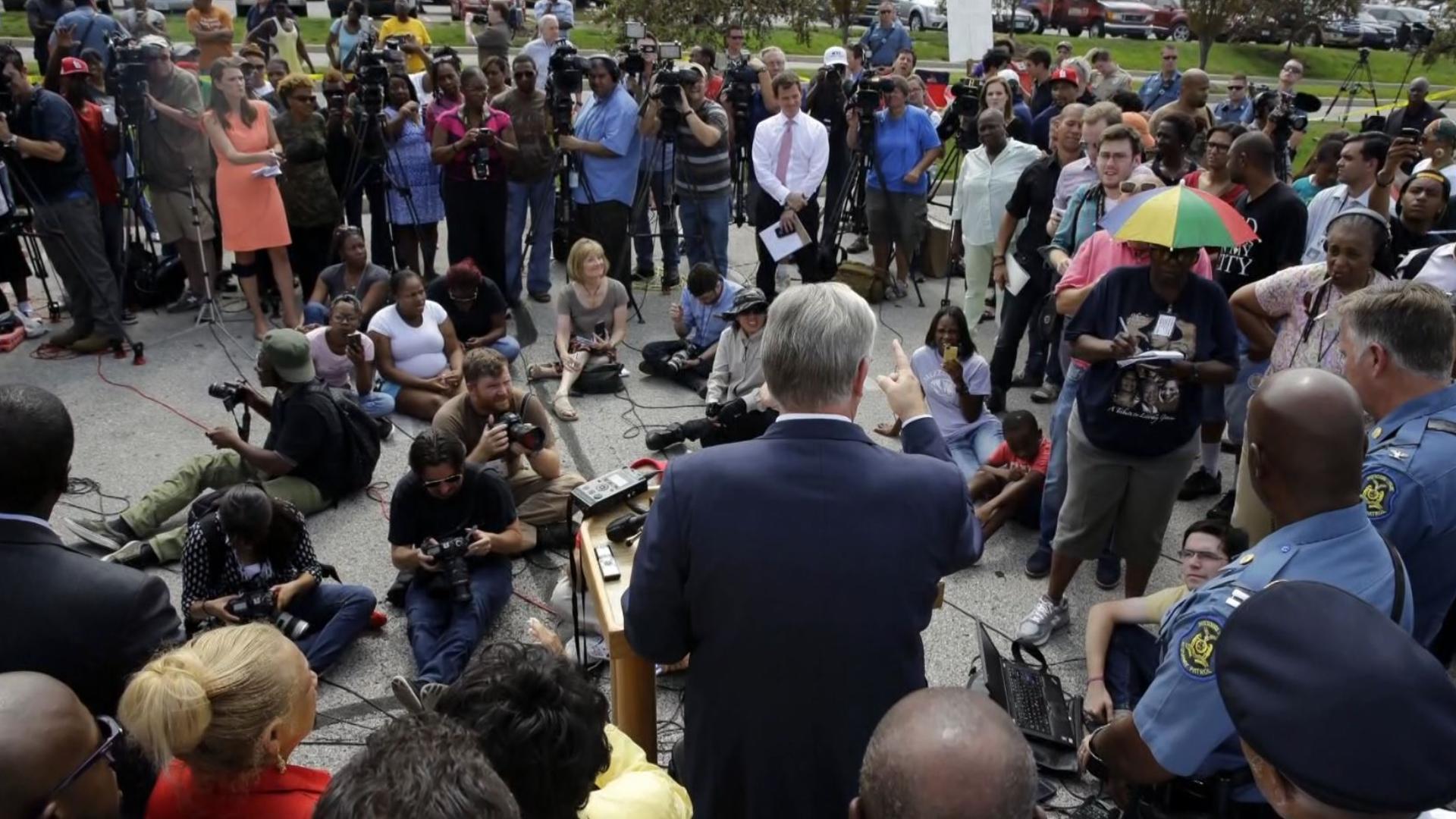FERGUSON, Mo. — The killing of Michael Brown Jr. opened wounds that had festered deep beneath the surface of the St. Louis region for years. All that pent-up passion spilled out into the streets in the historic protests that followed.
That's when Missouri Gov. Jay Nixon commissioned The Ferguson Commission, a diverse panel to dig into uncomfortable truths to find a path forward.
What took place on Canfield Drive on Aug, 9, 2014, shook Ferguson and the country to its core.
“I do remember having a very visceral reaction to the fact that they left Michael Brown's body in the streets for so long,” said St. Louis Circuit Attorney Gabe Gore.
Soon those streets would swell with righteous rage. Protestors compelled to make their voices heard. At first, Nixon met protesters with police force.
“I think his toughness ended up only like, backfiring on him of the people in the street, continuing to protest and take to the street,” said St. Louis Alderman Rasheen Aldridge.
Then, a different idea. Nixon found an outlet for the outrage.
"The governor made a broad call to action saying we as a community need to come together and heal,” said Gore.
Major inflection points in American history are often marked by a commission. Government officials appoint panels to diagnose what went wrong and prescribe a fix. And so perhaps it's fitting that the one of the first meetings of the Ferguson Commission gathered at the Missouri History Museum.
Daniela Velazquez is now a St. Louis City Alderwoman. In 2014, she worked at the ACLU. She was a staff consultant for the Ferguson Commission. That's where she first met Aldridge, a young, outspoken activist, and Gore, a corporate attorney from one of the most high-powered law firms in the city. An unlikely coalition was forming.
“The St. Louis community, kind of being awakened to some social injustices that have been occurring in our community for a long time. And a lot of people just weren't aware of them, including me,” said Gore.
The Ferguson Commission revealed some of those lesser known problems: speed traps and debtor's prisons, were feeding into problems of poverty and despair well known for far too long. The commission’s aim was ambitious and its findings were alarming.
The final report detailed vast racial gaps in life expectancy. In mostly white, suburban Wildwood, the life expectancy is 91.4 years.
In the mostly Black, inner-ring suburb of Kinlochi, life expectancy is just 55.9 years.
“This is actually, this is life. This is literally life or death. This isn't just some statistic, some theoretical construct, people are dying,” said Velazquez.
The action plan produced a progressive policy platform some politicians are still pushing for today.
“You had some radicals on that commission that was willing to push the needle,” said Aldridge.
Other reforms, like the use of body cameras for police, were more practical and immediate.
Ten years later, Gore now wields immense power as St. Louis' top prosecutor. Across the street, two aldermen carry the work of the Ferguson Commission with them at City Hall, along with a sense of accomplishment.
“I think we're better now than we were 10 years ago. It doesn't mean that we don't have work to do,” said Velazquez.
“I think the commission did work,” said Aldridge. “If it wasn't for Ferguson, if it wasn't for Mike Brown, if it wasn't for that movement, it sparked something inside of me. It sparked a different type of fight.”
How will history remember the Ferguson Commission?
“The beginning of an era of of a public awakening and focus on issues of social justice,” said Gore.

